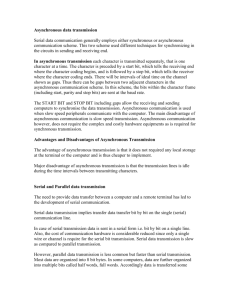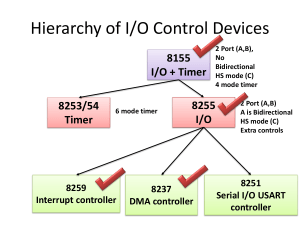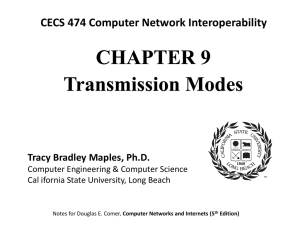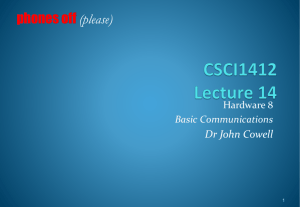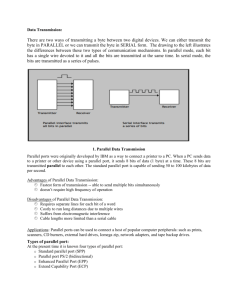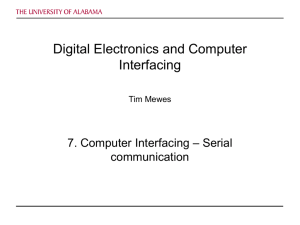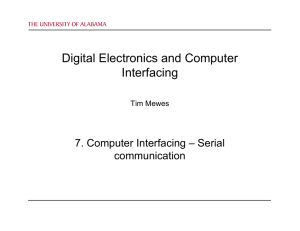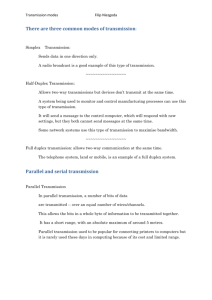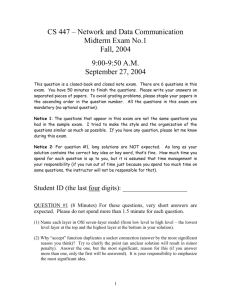Lecture-12(Data Transmission)
advertisement
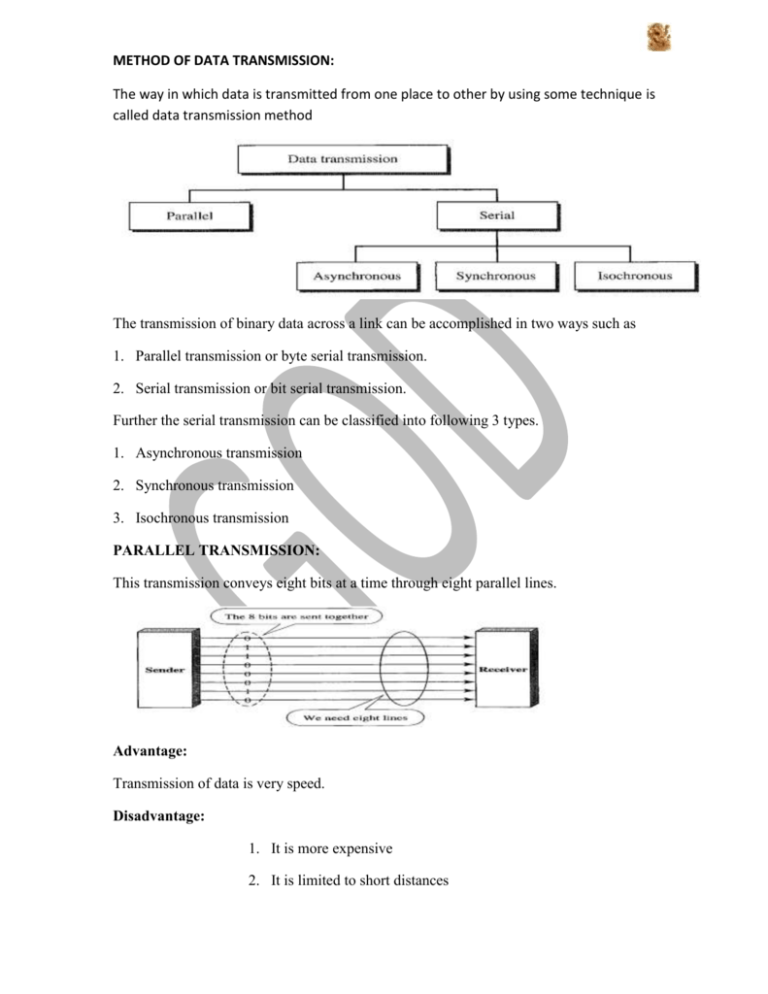
METHOD OF DATA TRANSMISSION: The way in which data is transmitted from one place to other by using some technique is called data transmission method The transmission of binary data across a link can be accomplished in two ways such as 1. Parallel transmission or byte serial transmission. 2. Serial transmission or bit serial transmission. Further the serial transmission can be classified into following 3 types. 1. Asynchronous transmission 2. Synchronous transmission 3. Isochronous transmission PARALLEL TRANSMISSION: This transmission conveys eight bits at a time through eight parallel lines. Advantage: Transmission of data is very speed. Disadvantage: 1. It is more expensive 2. It is limited to short distances SERIAL TRANSMISSION: This transmission conveys a message one bit at a time through a channel. Each bit represents a part of the message. The individual bits are then reassembled at the destination to compose the message In general one channel will pass only one bit at a time. Thus bit serial transmission is necessary in data communication if only a single channel is available. Bit serial tansmission is normally just called serial transmission and is the communication method in many computer peripheral In this transmission one bit follows another so one communication channel is required rather than n transmission channel to transmitting the data between two communicating device A parallel/serial converter is used between sender and the transmitting channel and serial/parallel converter is used between the transmitting channel and receiver to receive the data. ADVANTAGE: Only one communication line is used to send the data It is less expensive. DISADVANTAGE: Transmitting of data is not so speed due to one communication line. ASYNCHRONOUS TRANSMISSION: In asynshronous transmission each character is transmitted separately with separate synchronization information. This type or transmission is often used in situation when character may be generated at random intervals such as when a user types at terminal. In asynchronous transmission all of the bits that comprise a character are framed and then sent as a single transmission string In this transmission we send 1 start bit (0) at beginning and 1 or more stop bits(1s) at the end of each byte. There is a gap between each byte/data unit The clocks of the transmitter and the receiver are not continually synchronized but the receiver needs to know when the character begins and ends. For this reasons the characters bit string is framed with start and stop bits. At least one stop bit is added to mark the end of the character and allow recognition of the next start bit In this transmission the error can be detected by using adding parity bits at the end of each character in a frame. ADVANTAGE: It is cheap and effective. DISADVANTGAE: Speed of the data transmission is slower. SYNCHRONOUS TRANSMISSION: In this transmission a large blocks of data such as the contents of a disk file to be transmitted. So synchronous transmission is more efficient methods of transmitting large block of data. The data usually buffered and transmitted as an entire message or frame for this reason clocks on both sides must maintain synchronization during transmission. In this transmission the bit stream is combined into longer “frames” which contain Multiple bytes. Here the error can be detected using error detection mechanism called cyclic redundancy check In this transmission we send bits one after another without start/stop bits or gaps. ADVANTAGE: Data transmission is faster. ISOCHRONOUS TRANSMISSION: In real time audio and video, in which uneven delays between frames are not acceptable, synchronous transmission fails. The Isynchronous transmission guarantees that the data arrive at a fixed rate. Example: TV image are broadcast at the rate of 30 images per sec.they must be viewed at the same rate .if each images is sent by using one or more frames,there shuld be no delays between frames
